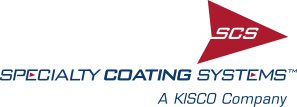<< View SCS Blog
Conformal Coating Boots vs. Tape: Making the Right Choice
Masking tapes and boots serve to shield components for specific masking purposes. Optimal masking protection hinges on selecting between the two options. It is imperative to uphold conductivity at all times. Moreover, operational variables such as the assembly’s production volume, the surface geometry of the component/assembly, and the type of coating on the assembly substrate play in determining whether tape or boot masking material is the most suitable choice.
Conformal Coating Tape
Masking tapes and smaller dots represent a highly accepted and standardized method of masking. Due to their labor-intensive and time-consuming nature, they are primarily utilized for masking low volumes of assembly components. Conformal coating tapes are also efficiently protect flat assembly areas, such as the edges of PCBs or conductive pads. Their counterpart, masking dots, are used to safeguard smaller, specified keep-out areas like mounting holes. Tapes and dots are available in different colors, sizes, levels of adhesion and material types, expanding their range of application. As with all masking, the key is to choose the right tape or dot for the assembly and its coating process
However, there are some challenges associated using adhesive tapes for masking. These issues include:
- Adverse reactions between the tape and conformal coating can generate de-wetting effects on the PCB. Assuring compatibility with such conformal film materials as solvent-based acrylic, silicone and polyurethane safeguards the tape from responding unfavorably to the solvents.
- Conformal coating can seep under the tape because of bleeding/leaking during application if masking is done poorly. Failure to prevent coating penetration into restricted areas can lead to expensive and time-consuming fixes like repairing leaks, removing the conformal coating, replacing incorrectly masked components or even scrapping the entire assembly.
- Difficult removal during de-masking can leave adhesive residues that require additional labor (cost/time) to be removed, potentially leading to longer-term performance issues.
- Unwrapping occurs when the mask does not remain sealed during processing, so the tape cannot adequately protect the assembly from intrusion by the coating.
Masking Boots
Recyclable masking boots provide a cost-effective and labor-saving option in comparison to taping processes. Boots are more efficient for large-batch component masking and can be custom made to accommodate an exceptional range of component alternatives. Boots offer an advantage for projects requiring repeat masking of high volume production, effectively covering entire components when needed. After the initial expense, the return on investment for boots easily surpasses hand-masked tapes. Unlike tapes, masking boots generate dependable defense for a wide range of assembly components for all conformal coating types and application techniques, including:
- Batch/selective robotic spraying of PCBs and related assemblies
- Dipping processes, either horizontal or vertical
- Parylene chemical vapor deposition (CVD)
To enhance their versatility, boots can be tailor-made to meet clients’ exact assembly and component specifications. Their usage is straightforward – simply secure the boots over the designated components (connectors, plugs, sockets, etc.) that require protection during the application of conformal coating.
Conclusion
Correctly choosing between masking tapes and boots is crucial for effective conformal coating procedures. The wrong choice can result in electrical components being left exposed to conformal coating, potentially causing component malfunction. In general, tapes are most effective for flatter surfaces and smaller production runs. Reusable masking boots are well-suited for a variety of component shapes and sizes, offering a superior and economical solution for masking larger production volumes. Notably, the use of automated masking technology has enabled the masking of larger volumes of parts at an accelerated pace. This has significantly reduced production time and costs for many manufacturers.

